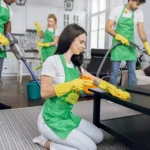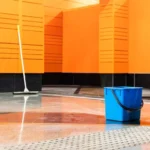Do you know the material of your window screens? Most screens are made from some type of nylon, but some are made from aluminum.
Many people like aluminum screens because they are more durable, and less likely to rip or tear. However, aluminum screens have a downside. We all know that we live in the “rust belt.” Steel, like your car frame, rusts. Aluminum, on the other hand, oxidizes.
What this means is that over time, your aluminum screen will get a white powdery substance on it. This is oxidized aluminum. If you leave your screens on all year, this oxidation will transfer, through rain, wind, and snow, onto your glass.
If the windows are cleaned on a regular basis, this will never be a problem. But if the windows go several years without being cleaned, this oxidation will etch into the glass, creating a condition called screen burn.
Screen burn can be lessened by using steel wool and ammonia to scrub it off the glass, but this will not remove it completely. The only way to remove screen burn completely is by using acid, such as muriatic acid or phosphoric acid. These are the same chemicals found in household oven cleaners.
Have you ever read the warnings and safety precaution on oven cleaner? These chemicals will burn your skin, eyes, and lungs. For this reason, Western Reserve Window Cleaning does not do chemical window restoration. We will reduce the visibility of your screen burn, but our non-chemical approach will not remove it completely.
The best way to avoid this situation is two-fold. First, store your screens for the winter. It allows more light into your house, and you usually aren’t opening the windows in the winter anyway. Second, have your windows professionally cleaned at least two times per year. This will help prevent the oxidation from building up on your glass in the first place.








